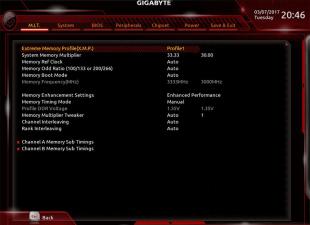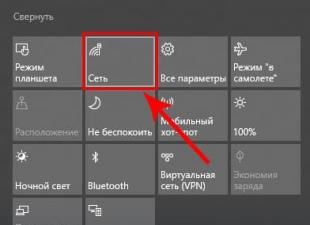Almost all users who understand something in SoC enter into bloody disputes about whose smartphone, processor, GPU is cooler. Actually, GPU power is measured in FLOPS, a special unit that shows how many floating point operations a GPU (and not only) can perform per second. Anyone interested, please under the cat!
Let's start with the most popular GPU, the Mali-400. This GPU has won a lot of fame due to its performance and power consumption. At the same time, the chip was powerful and economical in terms of battery charge in many processors, from NovaThor U8500 to Exynos 4412. There are many varieties of this GPU, which differ in the number of cores. Below are a few smartphones in which this GPU is implemented and the number of GFLOPS.
samsung galaxy Ace 2- Mali-400MP- 275MHz- 2.48Gflops
Samsung Galaxy S3- Mali-400MP4- 533MHz- 19.2Gflops
Quite a big difference, isn't it?
I also spread the myth that the higher the frequency, the more powerful the chip
Mali-450MP4- 700MHz, which is in MT6592, and which, according to the assurances of several users of the Treshbox, should beat even the not yet released Adreno 420. The result is 41.8Gflops. Quite a big step up from the Mali-400MP4, but the Adreno 330-450MHz hits a whopping 129.6Gflops, which is unrealistically high. Moreover, its frequency is lower than on the Mali-450MP4 at 250MHz. For comparison, the top PowerVR G6430- 450MHz, which is in the iPhone 5S and iPad Air, gains 115.2Gflops. The most powerful Mali-628MP6- 533MHz, which is in the Octa version of Samsung Galaxy Note 3 hits 102.4Gflops.
Also, do not forget the Tegra 4 and Tegra 4i. GeForce ULP x72, which is in Tegra 4, gains 96.8Gflops, and its LTE brother with GeForce ULP x60 - 79.2
But here the most interesting thing happens, because Adreno 330 also has a 550MHz version (which in the near future can be obtained using custom kernels) and this very overclocked version is gaining as much as 158.4Gflops! This is a record.
Let's take a look at older GPUs like Adreno 320, Adreno 225, GeForce ULP x12 and PowerVR SGX544MP3 and SGX554MP4, and don't forget the simple SGX544MP found in the super popular MT6589 chip.
Also, let's look at video processors Adreno 203, Adreno 205, Adreno 200, Adreno 220 and Adreno 305. The first 4 video processors score the following: Adreno 200- 3.92Gflops at 245MHz, Adreno 203- 7.84Gflops at the same frequency of 245MHz. As you can see: a double result at the same frequency.
Adreno 205 is a continuation of the 203rd. It hits 8.5Gflops, which isn't a lot, but the next GPU, called Adreno 220, breaks the stereotypes of not-so-high-end GPUs: an incredible 18Gflops is the level of the Mali-400MP4 533MHz found in the top-end Samsung Galaxy S3. Now consider Adreno 305, which is a simplified version of Adreno 320. This GPU is found in processors such as Snapdragon S4 Plus and Snapdragon 400. So, this accelerator is gaining 21.6Gflops at 450MHz.
Adreno 320 is divided into two categories: which is in S4 Pro, and which is in Snapdragon 600. They differ in the number of blocks: if the S4 Pro version has 64 of them, then the 600 version has 96 of them. The Adreno 320 S4 Pro gains 57Gflops, and his S600 version is as much as 97.2 at 450MHz. This is even more than the GeForce ULP x72, so the Snapdragon 600 1.9GHz has a more powerful GPU than the Tegra 4. A shocking result.
Let's take a look at the Adreno 225. At 400MHz, it hits 25.6Gflops. For comparison, the GeForce ULP x12, which is in Tegra 3, gains 12.5Gflops at 520MHz. Adreno 225 is more powerful than GeForce ULP x12… Hmm… But if it’s true, then GeForce ULP x12 has the same performance… 4.5Gflops lower than Adreno 220…
Now let's move on to the PowerVR SGX544MP3, which is in the Exynos 5410 or, more simply, in the Samsung Galaxy S4. Its performance is 51.1Gflops. Not the most powerful. The more top-end SGX554MP4, which served as the gaming base for the iPad 4, produces 76.8Gflops. Much bigger.
But once I found out the performance of the SGX544MP, which is in the MT6589 and MT6589T, I… never mind. The MT6589 has a 286MHz version. It gives out only 9.2Gflops. This is very small, but still more than its younger brother MT6589M. He has a graph. the accelerator operates at a frequency of only 156MHz. To be honest, I don't want to talk about this processor, but I have to. So, it gives out only 4.9Gflops. It's not much better than the Adreno 200. The turbocharged MT6589T has a 357MHz booster and that gives it 11.4Gflops.
And now for the consoles. The beloved PSP produces only 2.6Gflops. Do you remember the incredible graphics of PSP games? And the way they walked smoothly on it? Adreno 330 is more than 50 times more powerful than PSP. But a 50-fold increase is not felt. PSVita is a serious development of iron. It has a PowerVR SGX543MP4+ and it delivers an impressive 51.2Gflops.
And now about PS and Xbox. PS3 has a performance of 228.8Gflops and I believe that the next generation of GPUs will be more powerful than the beloved set-top box, but to the level of PS4, which is still gaining 1840Gflops, like cancer to China. By the way, the super-powerful Nvidia GeForce GTX Titan graphics card is gaining 4500Gflops, and the new GTX 780Ti is about 4800Gflops. To the computer, as to the moon: D
Oh, I forgot about the Vivante GC6400 video accelerator, which runs at 800MHz. This video accelerator is the only competitor to the infernal Adreno 330: its performance is 128!!! Gflops, which is only 1.6 Gflops less than the Adreno 330, but we know that developers do not really want to optimize games for this rare accelerator. For example, I do not know of any device with this accelerator. Who knows: please write in the comments
ARM processor is a mobile processor for smartphones and tablets.
This table lists all currently known ARM processors. The table of ARM processors will be supplemented and upgraded as new models appear. This table uses a conditional system for evaluating CPU and GPU performance. The performance data for ARM processors was taken from a variety of sources, mainly based on the results of such tests as: PassMark, Antutu, GFXBench.
We do not claim absolute accuracy. Absolutely accurate ranking and evaluate the performance of ARM processors impossible, for the simple reason that each of them, in some ways, has advantages, and in some ways lags behind other ARM processors. The table of ARM processors allows you to see, evaluate and, most importantly, compare different SoCs (System-On-Chip) solutions. Using our table, you can compare mobile cpu and find out exactly how the ARM-heart of your future (or present) smartphone or tablet is positioned.
Here we have compared ARM processors. We looked and compared CPU and GPU performance in various SoCs (System-on-Chip). But the reader may have a few questions: Where are ARM processors used? What is an ARM processor? What is the difference between ARM architecture and x86 processors? Let's try to understand all this without going into too much detail.
First, let's define terminology. ARM is the name of the architecture and at the same time the name of the company that develops it. The abbreviation ARM stands for (Advanced RISC Machine or Acorn RISC Machine), which can be translated as: advanced RISC machine. ARM architecture combines a family of both 32 and 64-bit microprocessor cores developed and licensed by ARM Limited. I would like to note right away that ARM Limited is engaged in the development of cores and tools for them (debugging tools, compilers, etc.), but not in the production of the processors themselves. Company ARM Limited sells licenses for the production of ARM processors to third parties. Here is a partial list of companies licensed to manufacture ARM processors today: AMD, Atmel, Altera, Cirrus Logic, Intel, Marvell, NXP, Samsung, LG, MediaTek, Qualcomm, Sony Ericsson, Texas Instruments, nVidia, Freescale ... and many more.
Some companies licensed to release ARM processors create their own variants of cores based on the ARM architecture. Examples include: DEC StrongARM, Freescale i.MX, Intel XScale, NVIDIA Tegra, ST-Ericsson Nomadik, Qualcomm Snapdragon, Texas Instruments OMAP, Samsung Hummingbird, LG H13, Apple A4/A5/A6 and HiSilicon K3.
On the basis of ARM processors today work virtually any electronics: PDA, mobile phones and smartphones, digital players, portable game consoles, calculators, external hard drives and routers. All of them contain an ARM core, so we can say that ARM - mobile processors for smartphones and tablets.
ARM processor represents a SoC, or "system on a chip". SoC system, or "system on a chip", can contain in one chip, in addition to the CPU itself, and the rest of the full-fledged computer. This is a memory controller, and an I / O port controller, and a graphics core, and a geopositioning system (GPS). It can also contain a 3G module, as well as much more.
If we consider a separate family of ARM processors, say Cortex-A9 (or any other), we cannot say that all processors of the same family have the same performance or all are equipped with a GPS module. All these parameters strongly depend on the chip manufacturer and what and how he decided to implement in his product.
What is the difference between ARM and X86 processors? By itself, RISC (Reduced Instruction Set Computer) architecture implies a reduced set of instructions. Which accordingly leads to very moderate power consumption. Indeed, inside any ARM chip there are much fewer transistors than its counterpart from the x86 line. Do not forget that in the SoC system everything peripherals is located inside a single chip, which allows the ARM processor to be even more economical in terms of power consumption. The ARM architecture was originally designed to compute only integer operations, unlike x86, which can work with floating point or FPU calculations. It is impossible to unequivocally compare these two architectures. In some ways, the advantage will be for ARM. And somewhere and vice versa. If you try to answer the question in one sentence: what is the difference between ARM and X86 processors, then the answer will be this: the ARM processor does not know the number of commands that the x86 processor knows. And those that know, look much shorter. This has both pluses and minuses. Be that as it may, lately everything suggests that ARM processors are slowly but surely catching up, and in some ways even surpassing conventional x86 ones. Many openly declare that ARM processors will soon replace the x86 platform in the home PC segment. As we have already, in 2013, several world-famous companies have completely abandoned the further release of netbooks in favor of tablet PCs. Well, what will actually happen, time will tell.
We will track the processors already available on the ARM market.
From the very times when the very first computer (its likeness) appeared, the pursuit of power, performance began, and today, as before, nothing has changed in this regard, because every owner personal computer whose work is connected with the load on the computing power of the PC dreams of even more productive hardware.
All computers that exist are divided into several categories, ranging from microchips to supercomputers that consume tens of kilowatts of electricity and are top in computing capabilities. In this article, you will learn how to measure the performance of a personal computer.
From the earliest times, in order to measure the performance of a particular computer, they decided to use the number of floating point operations performed per 1 second of time. In practice, this turned out to be a very significant result indeed. The unit of measurement of 1 operation was called Flops (Flops). However, computers are very productive devices, so before the flop, the prefix kilo / mega / giga / peta / ex, etc. is used. Each listed operation is 1000 times larger than the previous one. For the final evaluation, Flops / s results are given, i.e. flops per second. If you want to read more about Flops, then you are here.
Measuring the performance of a personal PC
There are many tools to measure the FLOPS performance of a personal computer or laptop. However, all tools are based on the same principle of operation.
Of the possible interfaces, there is a performance analysis through command line, through Fortran and C++ compilers, etc. But we will go the easier way and use the already compiled .exe file program in Linpack, which is the most popular in measuring the performance of computers on Windows.
Below we present to your attention 2 versions of the Linpack program, which will help you determine how many floating point operations your computer does per second of time.
How to check?
First, unpack the archive and run the program (LinX.exe file). The interface of the program is very simple and you can easily understand it. First, go to the settings and give the program the highest priority. After that, try to turn off the resource consumption of the program. In the LinX interface, you can choose how many times or minutes to run the test and how much data to handle during it. When all settings are set, click Test. After completion, you will most likely see the result in GFlops/s (Gigaflops per second).
To represent how much it is: 1 flops=1 floating point operation; 1GFlops= 1,000,000,000 floating point operations.
 uptostart.ru News. Games. Instructions. Internet. Office.
uptostart.ru News. Games. Instructions. Internet. Office.


